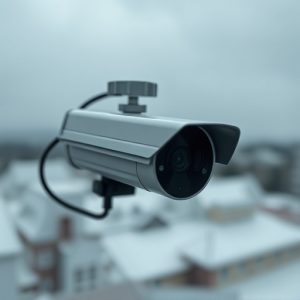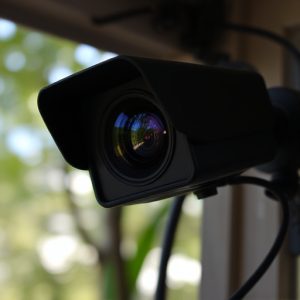Unveiling Hidden Cameras: Reflecting Light for Invisible IR Detection at Home
Infrared (IR) cameras, or invisible IR cameras, offer 24/7 security through thermal energy detection…….
Infrared (IR) cameras, or invisible IR cameras, offer 24/7 security through thermal energy detection, making them ideal for home monitoring. These devices emit infrared LEDs to illuminate dark areas and analyze heat signatures for clear images. By leveraging light reflection patterns from surfaces, advanced spy camera detection techniques enable homeowners to locate hidden Invisible IR Cameras in their homes. This modern approach combines optical sensors and AI to secure personal spaces in the growing digital era of privacy concerns.
Uncover the stealthy world of spy cameras with our guide on detecting invisible IR cameras for home monitoring. In an era where privacy is paramount, understanding how these hidden devices operate becomes crucial. This article delves into the science behind infrared (IR) camera technology and light reflection detection methods. Learn practical techniques to safeguard your home from unwanted peep-holes, ensuring peace of mind in today’s digital landscape. Implement these strategies to enhance your private space and maintain control over your personal data.
- Understanding IR Cameras and Their Operation
- The Science Behind Light Reflection Detection
- Implementing and Enhancing Spy Camera Detection Techniques at Home
Understanding IR Cameras and Their Operation
Infrared (IR) cameras, often referred to as invisible IR cameras, play a pivotal role in home monitoring and surveillance systems. These devices operate by capturing thermal energy or heat radiation emitted from objects, transforming it into visible light images. Unlike traditional cameras that rely on visible light, IR cameras are adept at seeing in the dark, making them invaluable for 24/7 home security.
The operation of an invisible IR camera involves advanced technology. It emits a series of infrared LEDs or lamps that illuminate the area being monitored. Objects absorb this infrared radiation differently, with warm objects absorbing more and cooler ones reflecting it. The camera then detects these variations in heat signatures, translating them into contrasting image patterns. This reflection technique allows for clear visibility even in complete darkness, making it an effective method for home monitoring.
The Science Behind Light Reflection Detection
The Science Behind Light Reflection Detection involves leveraging the principles of light interaction with surfaces. When an invisible IR (infrared) camera is used for home monitoring, it emits light at specific wavelengths that are imperceptible to the human eye. This light travels into a room and interacts with various objects within the space, reflecting off them in different directions. By analyzing these reflected light patterns, the spy camera can detect its presence or absence.
The technique relies on the fact that every surface reflects and absorbs light differently based on its material properties. The camera’s advanced sensors are designed to pick up these subtle variations in reflection, allowing it to identify consistent reflections that may indicate the presence of a hidden camera. This method is particularly effective for detecting IR cameras that operate in low-light conditions or are strategically placed to avoid direct line-of-sight detection.
Implementing and Enhancing Spy Camera Detection Techniques at Home
Implementing spy camera detection techniques at home has become increasingly important in today’s digital era, where privacy concerns are on the rise. One advanced method involves utilizing light reflection to detect Invisible IR Cameras used for home monitoring. This technique leverages the fact that cameras, especially infrared ones, often emit a faint but detectable light signal. By strategically placing lights and employing sensors, homeowners can create an intelligent system to identify and locate these hidden devices.
Enhanced spy camera detection can be achieved through a combination of optical sensors and artificial intelligence. These systems analyze light patterns and anomalies, learning the behavior of typical lighting in a space. Any deviations from this norm could indicate the presence of an invisible IR camera. This proactive approach ensures that personal spaces remain private and secure, giving homeowners peace of mind.
The reflection of light can expose invisible IR cameras used for home monitoring, offering a practical and cost-effective method for enhancing security. By understanding how these cameras operate and applying scientific principles of light interaction, individuals can effectively detect and counter potential privacy threats. With simple, DIY solutions, anyone can transform their homes into secure environments, ensuring peace of mind in today’s digital age.


